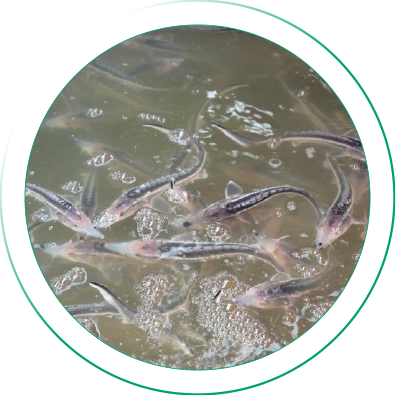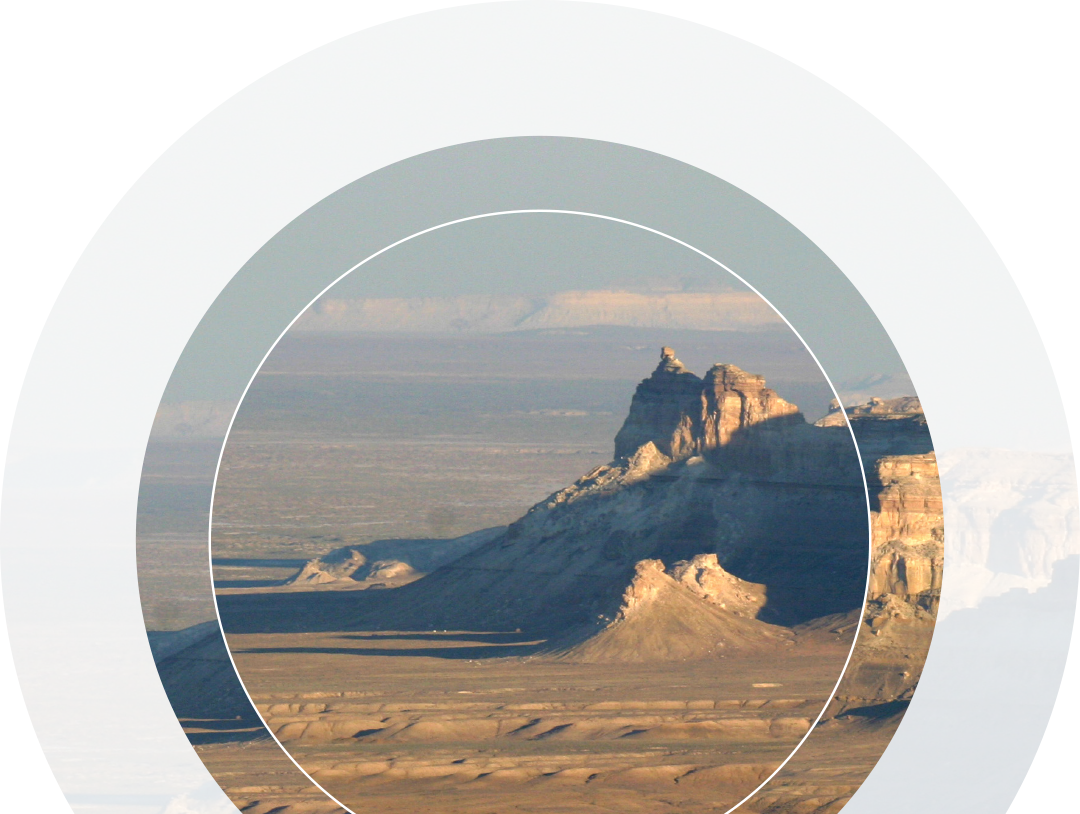Biodiversity Protection
GRI 306-2GRI 306-3GRI 306-4GRI 306-5
Management Approach
KMG has committed to biodiversity conservation and minimizing impacts on ecosystems as part of its Environmental Policy. The Company adheres to the principles of responsible natural resource use and implements measures to prevent and mitigate the negative consequences of its industrial activities on the environment.
|
Subsidiary |
Projects |
Volume of expenses, thous. KZT |
|---|---|---|
|
KMG System&Servises LLP |
compensation of fishery losses |
9,856 |
|
Kalamkas-Khazar Operating LLP |
fish stocking of the Ural River |
58,399.45 |
|
Magistralny Vodovod LLP |
fish stocking of the Kigash River |
23,211.517 |
KMG’s Principles and Commitments
In its operations, the Company is guided by the following principles:
- Prohibition of activities in specially protected natural areas that are critical habitats for rare and endangered species. Risk assessments are conducted before beginning work in ecologically sensitive areas.
- Application of the mitigation hierarchy, including avoidance, minimization, restoration, and compensation of potential significant impacts.
- Participation in research programs and industry partnerships to develop innovative solutions for environmental protection and biodiversity conservation.
- Prohibition of illegal hunting, fishing, and other use of natural resources by KMG employees and contractors within contract areas.
In 2025, KMG plans to develop a long-term Biodiversity Conservation Program, which will cover all Group entities and include comprehensive ecosystem protection measures.
Training on Biodiversity Impact Management
In September 2024, KMG’s Corporate Center organized training for specialists from its subsidiaries and dependent entities on biodiversity impact management. Ecologists and engineers from the Corporate Center and KMG Group companies participated in the program.
The training aimed to build a deep understanding of biodiversity issues in the context of corporate management. Participants studied key aspects of industrial impact on the environment and biodiversity, methods of minimizing such impact, and requirements for accounting and reporting.
Special attention was given to:
- Assessing biodiversity impacts, analyzing indicators and bioindicators in accordance with international standards and best practices;
- Recommendations from the Task Force on Nature-related Financial Disclosures (TNFD) and the GRI Sustainability Reporting Standards (GRI);
- The mitigation hierarchy principles including four key actions: avoidance, preservation, restoration, and compensation of potential impacts.
This approach supports the integration of biodiversity considerations into KMG’s management system, ensuring sustainable development and compliance with international environmental standards.
Monitoring and Assessment of Ecosystem Impacts
In areas located within the North Caspian State Reserve Zone, baseline environmental studies, drilling, and well testing have been conducted. At present, anthropogenic impact in these areas remains minimal and does not interfere with the migration of animals and birds.
The main environmental impact factors during offshore operations include:
- Increased suspended particles in water during construction;
- Alteration of seabed sediment structure due to intensive navigation;
- Physical noise impact during drilling and operations.
To monitor the environmental state, KMG conducts industrial environmental monitoring, including surveillance of decommissioned wells and scientific research (R&D) in hydrology, hydrochemistry, hydrobiology, and ichthyology. These studies also serve as compensatory measures for the unavoidable impacts on fish resources.
|
Indicator |
Onshore Operations |
Offshore Operations |
||||
|---|---|---|---|---|---|---|
|
2022 |
2023 |
2024 |
2022 |
2023 |
2024 |
|
|
Sites where biodiversity is covered by an EIA or similar document (%) |
100 |
100 |
100 |
100 |
100 |
100 |
|
Sites where regular environmental monitoring is conducted (%) |
100 |
100 |
100 |
100 |
100 |
100 |
|
Sites with decommissioned wells where regular monitoring is conducted (%) |
100 |
100 |
100 |
100 |
100 |
100 |

Case Example
Magistralny Vodovod LLP carried out the restocking of the Kigach River, releasing 23.6 thousand juvenile beluga sturgeon to help preserve the biodiversity of the Caspian Sea and its coastal zone.
For the same purpose, in 2024, Kalamkas-Khazar Operating LLP released 70 thousand juvenile Russian sturgeon and sterlet into the Ural River as part of its compensation measures, while KMG Systems & Services LLP released 18.8 thousand juvenile sturgeon
Impact of Power Transmission Lines on Avifauna
One of the significant environmental challenges associated with industrial activities is bird mortality caused by collisions with power transmission lines (PTLs) and electrocution. This is particularly relevant in steppe and semi-desert regions, where the absence of tree cover makes PTL poles attractive for nesting and resting by birds of prey.
KMG monitors high-risk areas for birds, identifying critical zones through special studies and production environmental control. The company implements measures to reduce negative impacts, including the installation of visual markers on PTLs and the application of other protective mechanisms.
Strategic Approach to Biodiversity Conservation
KMG implements nature conservation measures both within and beyond protected natural areas. The biodiversity conservation policy includes:
- Preservation of habitats and animal migration routes;
- Minimization and compensation of potential harm to ecosystems;
- Reduction of disturbed areas through restoration efforts.
To mitigate the impact on biodiversity, measures are taken to optimize the duration, intensity, and levels of industrial activity at oil production and transportation sites.
KMG is open to new initiatives and proposals in the field of biodiversity conservation and invites interested parties to submit their ideas to: hse@kmg.kz.
Protected Natural Areas and Biodiversity in KMG’s Regions of Operation
Northern Caspian Ecosystem
The Northern Caspian is the most biologically productive part of the Caspian Sea, rich in biological resources. The region’s waters are home to 25 fish species, including sturgeon, which accounts for 70–80 % of the global reserves in this basin.
The eastern part of the Northern Caspian and the deltas of the Volga, Ural, and Emba rivers are part of protected natural areas. These wetlands are key to Eurasian biodiversity, serving as breeding, molting, migration, and wintering grounds for millions of waterfowl and semi-aquatic birds. The Northern Caspian lies along the Siberian–Black Sea–Mediterranean migratory route, one of the largest flyways in Eurasia.
Background ecological research indicates that over 70 bird species migrate through the northeastern Caspian. Among them are five rare species listed in the Red Book of Kazakhstan.
Five species listed in the Red Book of the Republic of Kazakhstan also nest in the region’s terrestrial habitats. The most numerous is the steppe eagle. Other notable species include the pied avocet, magpie, and little egret.
The Caspian seal (Phoca caspica) is the only large marine mammal endemic to the Caspian Sea. Its population migrates seasonally: breeding occurs in the northern part during winter, followed by a move to the central and southern areas in spring and summer, and a return to the northern shallows in autumn.
Protected Areas and Ecosystem Monitoring
KMG actively conducts environmental monitoring on its contract areas, tracking the condition of flora and fauna, marine water pollution levels, seabed sediment, and air quality.
- The “Isatay” block is located in the northern Caspian Sea, 45 km from the Buzachi Peninsula (Mangystau Region), near protected natural areas.
- The “Abay” block lies in the northwestern part of Kazakhstan’s Caspian Sea sector, 60–70 km offshore from the Buzachi Peninsula (Atyrau Region), and is part of the Caspian protected zone.
- The “Al-Farabi” block is located in the southern part of Kazakhstan’s Caspian sector, with its western boundary adjacent to Kazakhstan’s state border with Russia in the Mid-Caspian Sea.
Protected Areas of Mangystau Region
Mangystau Region is rich in specially protected natural areas, including:
- Ustyurt State Nature Reserve;
- Kendirli-Kayasan Republican-level Protected Zone;
- Eight wildlife reserves and a regional nature park.
Rare animal species inhabit the region, including the Elaphe sauromates (blotched snake), listed in the Red Book of Kazakhstan. The Central Asian tortoise, which is widely found in the region, is considered threatened according to IUCN classification.
The Kendirli-Kayasan protected zone was established to preserve the habitat of the houbara bustard and the saker falcon, which are under special protection. The zone is governed by three regimes of nature use: strict reserve, wildlife reserve, and regulated use.
Protected Areas of Aktobe Region
State nature complex wildlife reserve of local significance “Kokzhide–Kumzhargan.” The territory includes two sites of the state nature reserve fund of republican significance: the Kokzhide Sands and the Kokzhide Groundwater, which are listed among the geological sites of the national and international nature reserve fund.
Environmental Monitoring and Conservation of Unique Ecosystems
KMG maintains strict environmental control over oil production areas, especially those near unique natural sites:
- The Urikhtau, Alibekmola, and Kozhasai fields (Aktobe Region) are located near the “Kokzhide–Kumzhargan” reserve. To prevent contamination of groundwater, constant monitoring of the environmental condition is carried out, including in the Kokzhide sand massif.
- The Karazhanbas field, located in the northwestern part of the Buzachi Peninsula, borders the North Caspian State Protected Zone. At this site, biannual monitoring of flora and fauna is conducted as part of industrial environmental control.

